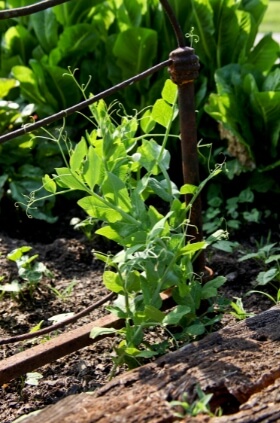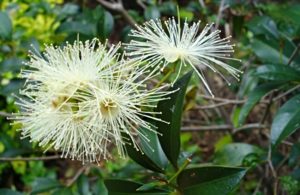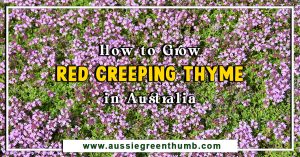For a while there snow peas, also called mange tout, were the pea crop to grow. Their soft and edible skin meant that the age-old art of shelling peas around the kitchen table was destined for the archives. Instead, picking and eating them directly from the vine was not only accepted, but encouraged.
Then, as if the pea growing industry needed a shake-up, sugar snap peas entered the market. Fatter and more shapely than the snow pea, these snap peas looked more like a traditional pea but sported the very edible outer pod as well.
It was as though the historical pea had been pre-softened and flavour enhanced purely to satisfy our delicate taste buds.
More...
How to Grow Sugar Snap Peas

Ideal Conditions for Growing Sugar Snap Peas
The beauty with growing sugar snap peas, or any legume crop, is that they don’t need much in the way of soil preparation. Obviously a loamy soil or one with more sand content is preferable to clay but when it comes to nutrients, the soil can be completely lacking and the peas will still flourish.
In fact, as they grow they will begin to rejuvenate your soil depositing much-needed nitrogen for the next crop of veggies that will take their place.We planted our recent crop in soil that was basically woodchip covered debris – with a smattering of sand – almost 3 months ago.
Since then the sugar snap peas have climbed to a height of more than 2 m (6.6 ft) and are flowering their heads off. Spent blooms are now producing a rich crop of peas ready for picking, and eating.
Trellis for Sugar Snap Peas
Like snow peas, sugar snap peas require a trellis to grow. Their soft stems easily bend in the wind or under the sheer weight of a bumper crop so they need to be staked against some support in order to keep them growing and producing.
As I found this season, a 1.8 m high supporting trellis isn’t high enough and you would do much better to go to at least 2-2.5 m. An unsupported 40-50 cm can still break and cause problems for the whole plant.

The best support for sugar snap peas is a wire fence, lattice or some pea teepees. I’ve seen them supported on string supports as well but they are more susceptible to breaking if they only rely on this. In most temperate climates, like ours, sugar snap peas can be grown all year round so saving your seed after a crop is definitely encouraged.
To do this, leave a few pods on the vine to over-mature (this becomes obvious when the pea casing begins to split) and then, after picking, shell and allow the peas to dry out in a cool spot. They can be re-planted almost immediately or stored for a future growing season.
Caring for Sugar Snap Peas
Fertilising your snap peas is a breeze too. Every 2-4 weeks coat your crop with a solution of liquid fertiliser – diluted worm wee or seaweed emulsion is the best. You can offer some compost around the base of the peas but it will be the liquid fertiliser that offers the most nutrients to these vegetables.
Sugar Snap Pea Pests to Look Out For
Snails are the most likely pest to disturb your snap peas effectively whittling out the sickest plants and devouring them overnight. While you could lace the soil with snail pellets or some other repellant, the best option is just to leave them.
They will leave the healthiest specimens and concentrate only on the sugar snap peas that are struggling anyway – possibly doing you a service.
Apart from snails, your kids are going to love these once they get a taste for them as well and I’m all out of options for trying to repel them. However, if you’re wanting to grow a pea crop this season then you can’t go past sugar snap peas.
They’re delicious, easy to grow and produce such abundant crops. Start growing sugar snap peas now.
Published on June 7, 2023 by Nathan Schwartz
Last Updated on December 4, 2023




